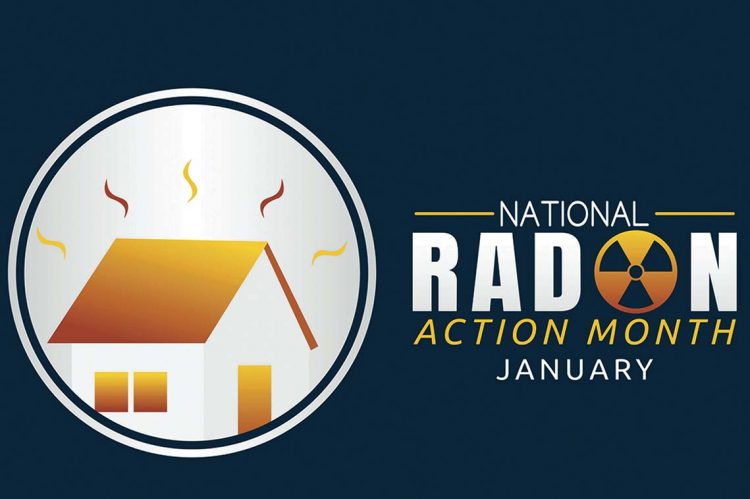While most of us are familiar with the word “radon,” the term is most important to those who deal with it. This includes the home inspectors who find evidence of it in a home, and those who mitigate it. The second leading cause of lung cancer, you can’t see, smell or taste radon gas. Even if you’re breathing in an elevated level of radon, there are no obvious signs. In the United States, the Environmental Protection Agency (EPA) estimates that nearly 21,000 lung cancer deaths each year are radon related. In Canada, that number stands at 3,000.
Radon gas is a byproduct of the underground decay of radioactive elements such as uranium and thorium. As these substances deteriorate, the gas is released before eventually working its way to the surface of the ground and into the air we breathe.
Fortunately, radon gas is so diluted in our outdoor environment that it doesn’t pose a health risk. In buildings, however, it can become concentrated. And while radon gas has been detected in every state within the U.S., some areas pose a higher risk than others.
Nearly one out of every 15 homes in the United States and Canada is estimated to have an elevated radon level. It typically moves up through the ground to the air above and into your home through cracks and other holes in the foundation. Your home traps radon inside, where it can build up. Since this secret killer comes from the ground, not construction materials, any home may have a radon problem.
How Radon Can Get Into Your Home
- Cracks in Solid Floors
- Construction Joints
- Cracks in Walls
- Gaps in Suspended Floors
- Gaps Around Service Pipes
- Cavities Inside Walls
- The Water Supply
Given the seller’s market we experienced much of last year, many buyers chose to skip the home inspection. It’s highly recommended that new homeowners get a home inspection, even after they’ve moved into their new home, and to add radon testing to that inspection. This test is the only way to know whether there is radon leaking into the home.
Pillar To Post Home Inspectors conduct a short-term test using a continuous monitor to see if a home has elevated levels of radon. Testing takes two to three days and results are provided and interpreted before the report is sent directly to the client. Recommendations will then be made for a mitigation system.
 Dan Steward is president and CEO of Pillar To Post Home Inspectors USA and has been lauded as a 2019, 2020 and 2021 RISMedia Newsmaker. Pillar To Post Home Inspectors has been named No. 1 in category for nine years in a row on Entrepreneur Magazine’s Franchise 500® prestigious list ranking top franchise companies. For more information, visit www.pillartopost.com/radon.
Dan Steward is president and CEO of Pillar To Post Home Inspectors USA and has been lauded as a 2019, 2020 and 2021 RISMedia Newsmaker. Pillar To Post Home Inspectors has been named No. 1 in category for nine years in a row on Entrepreneur Magazine’s Franchise 500® prestigious list ranking top franchise companies. For more information, visit www.pillartopost.com/radon.












